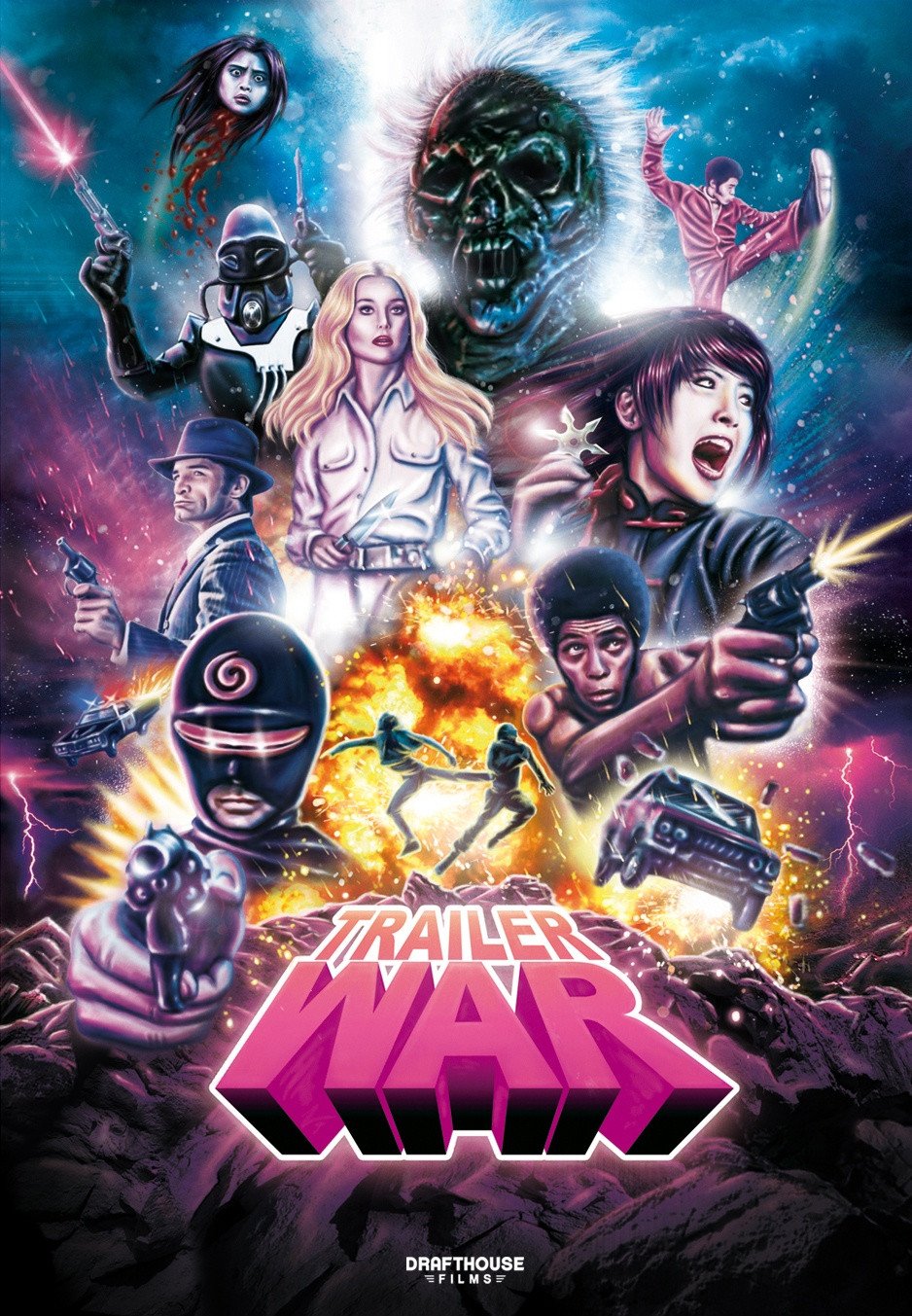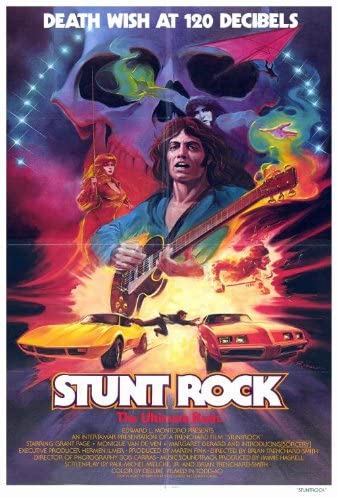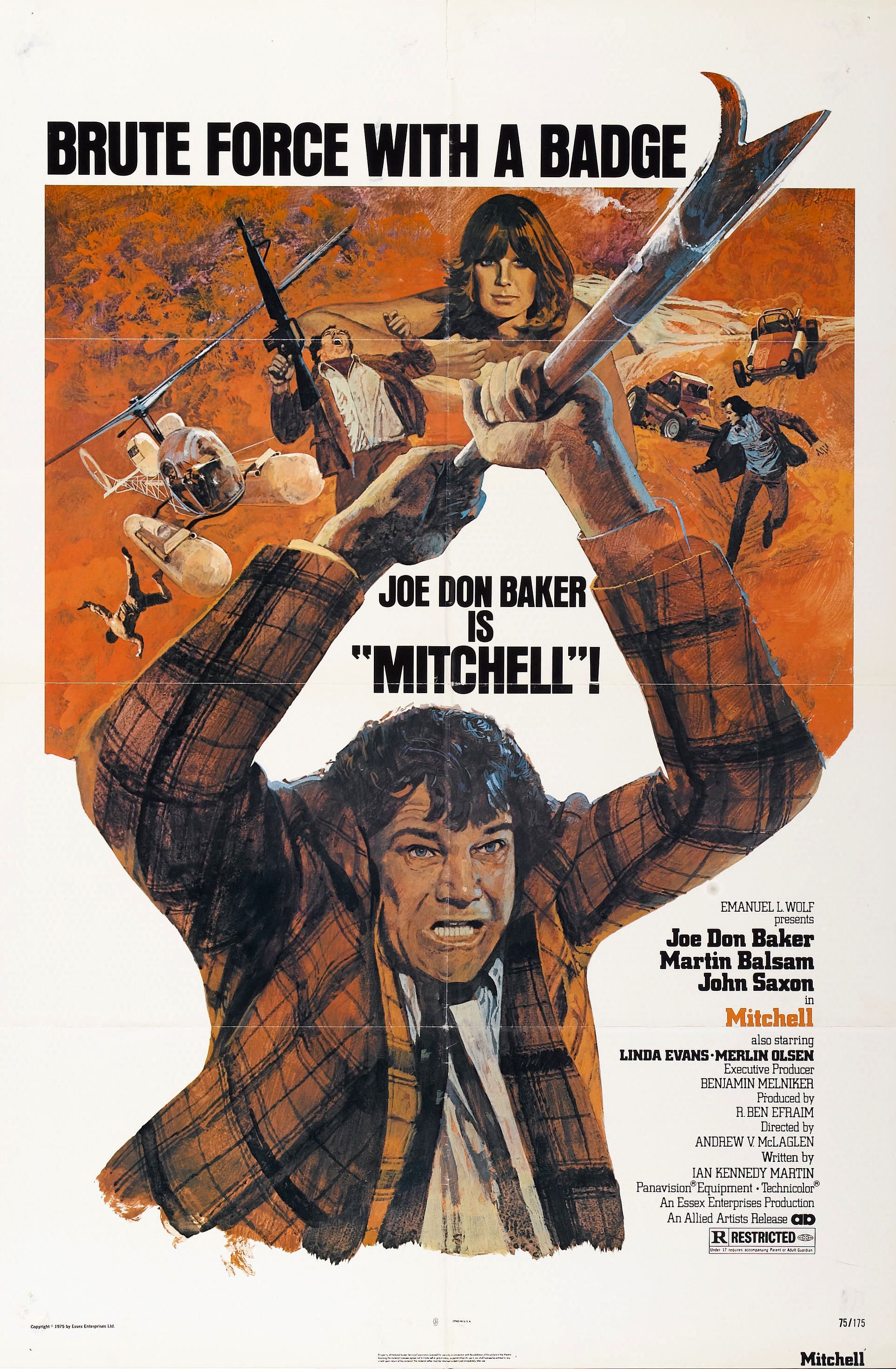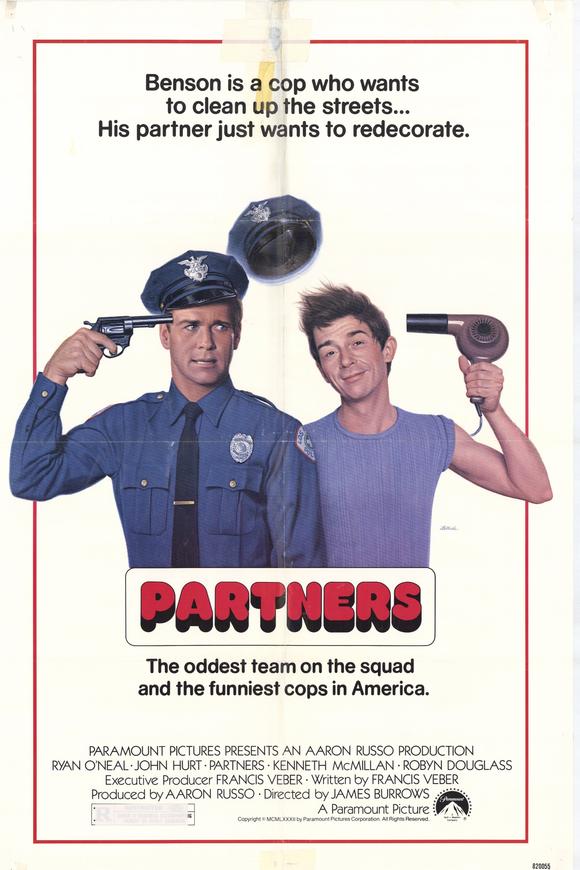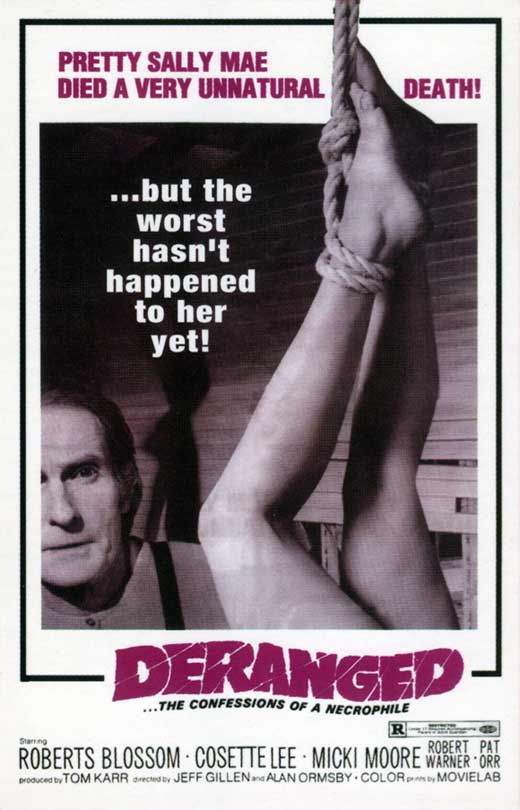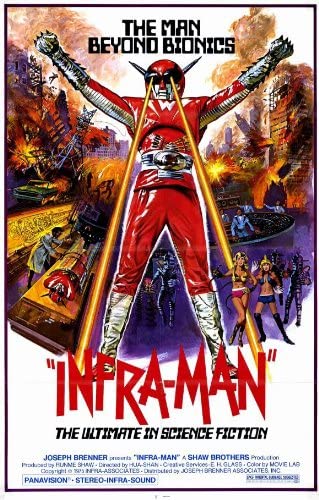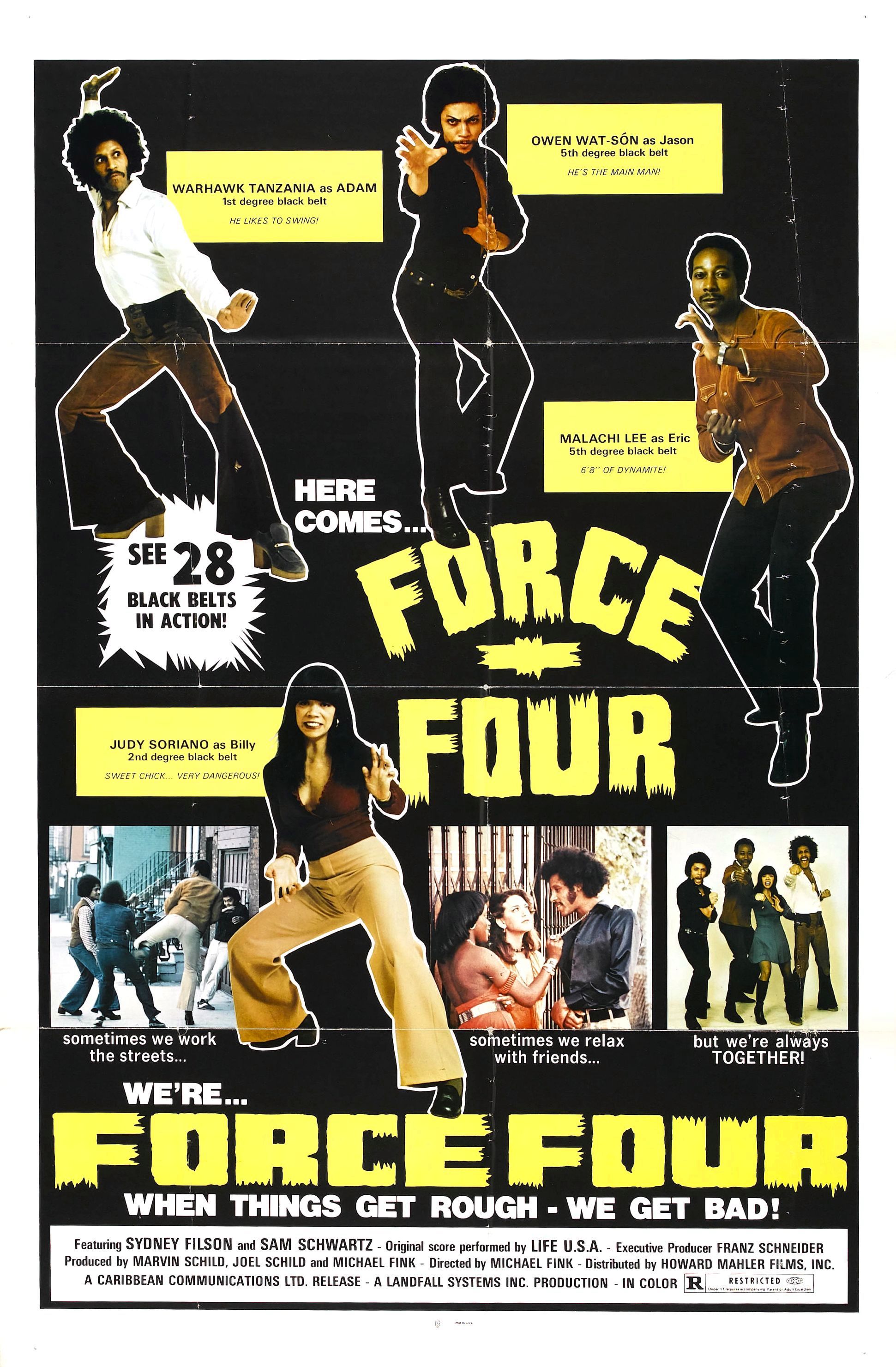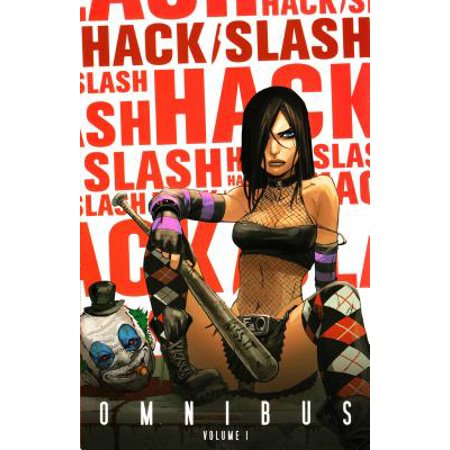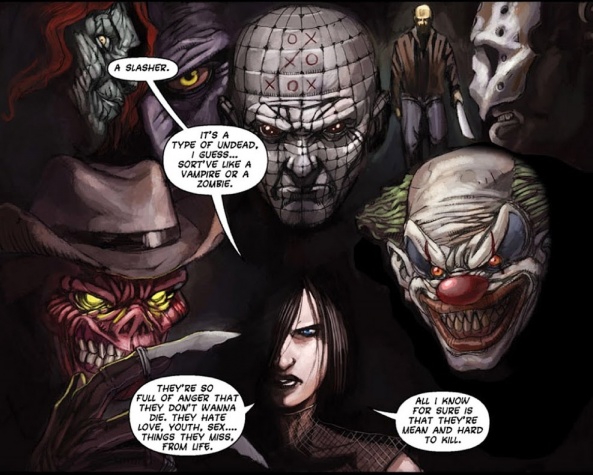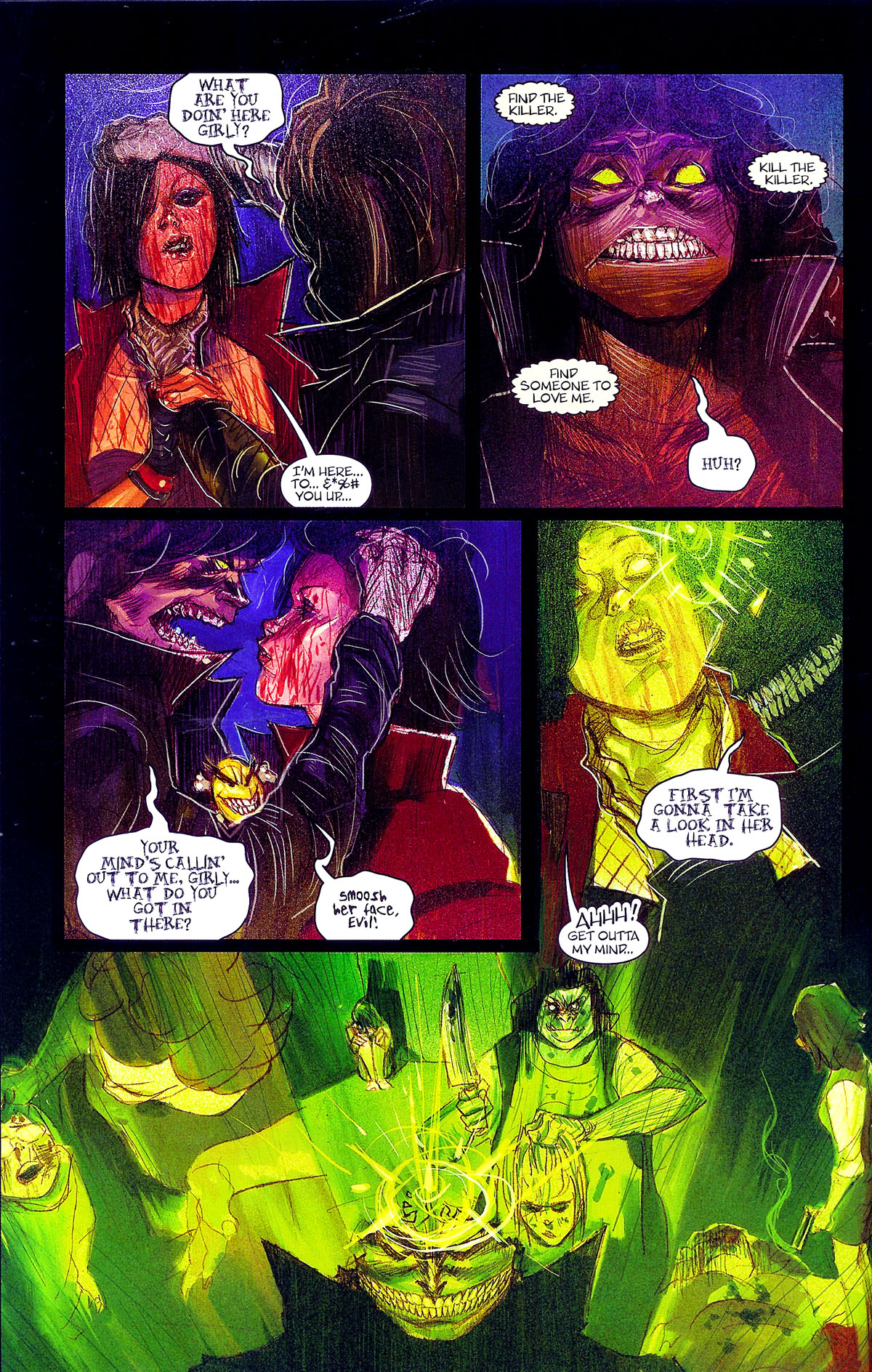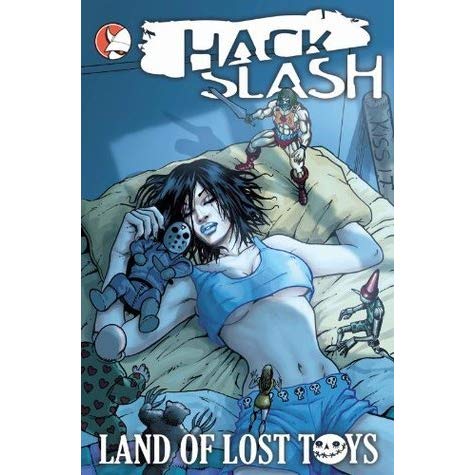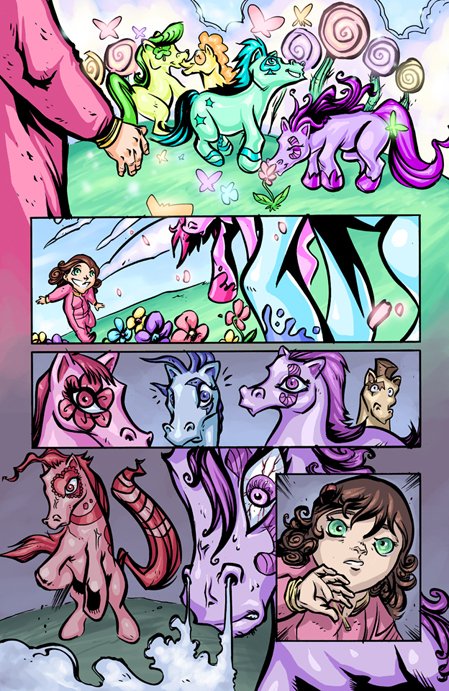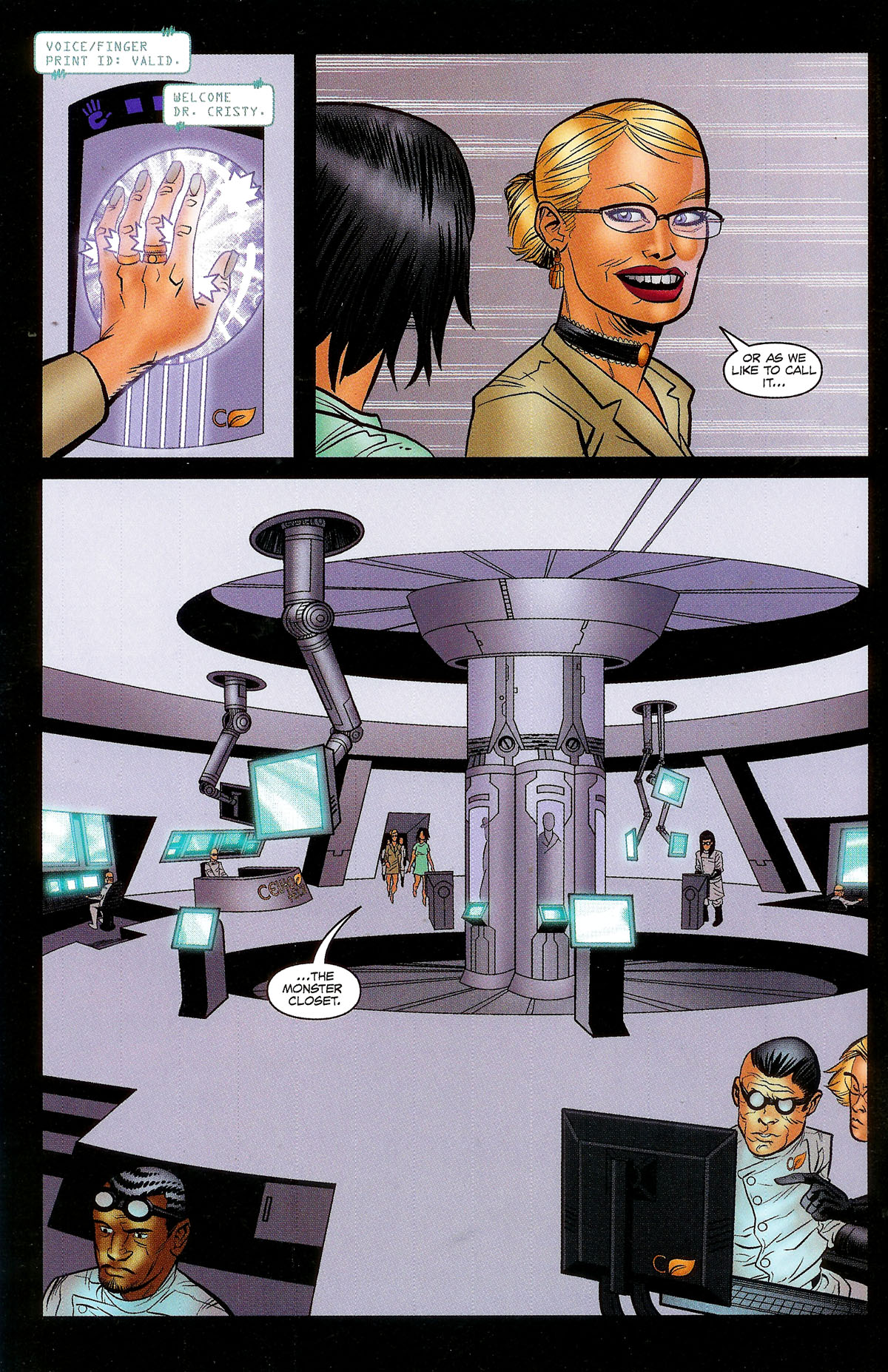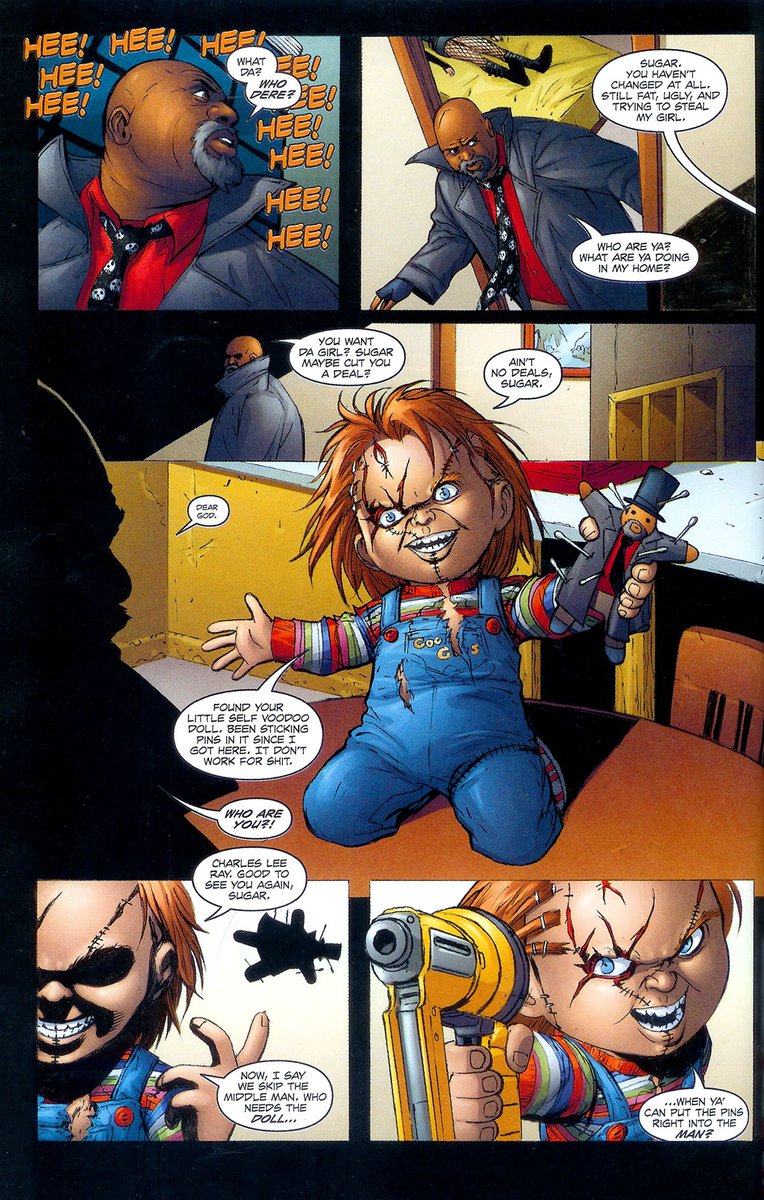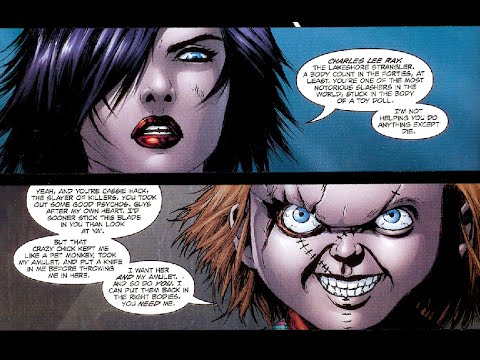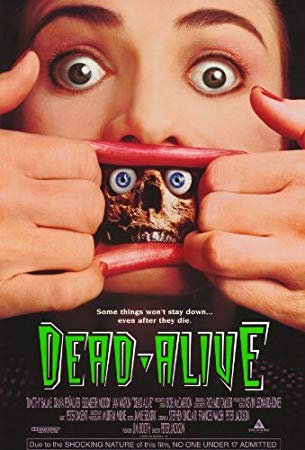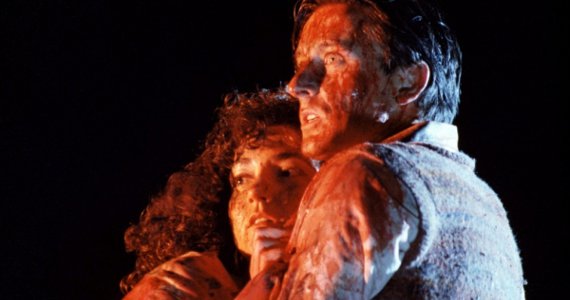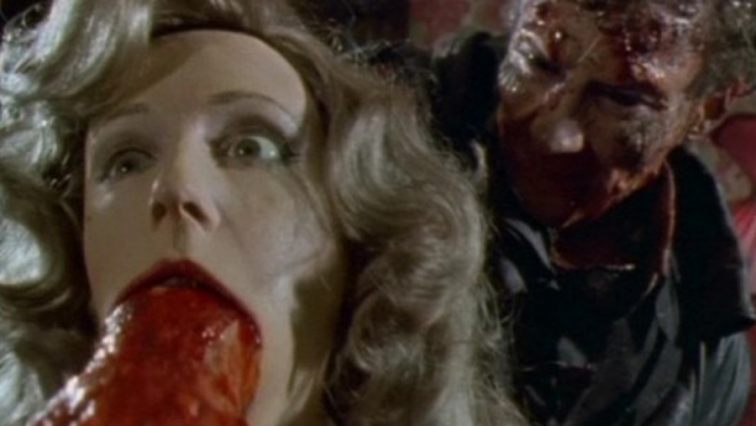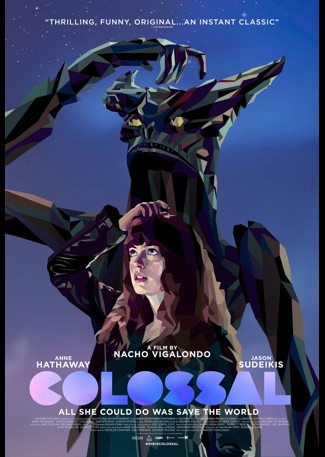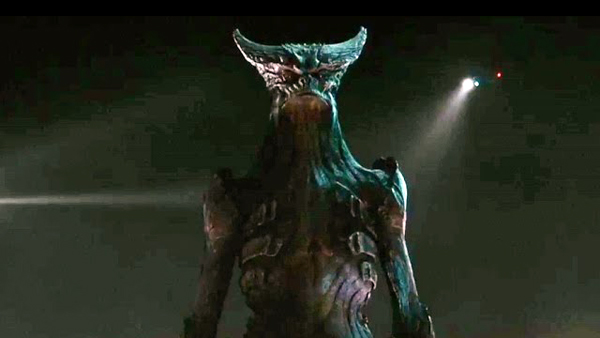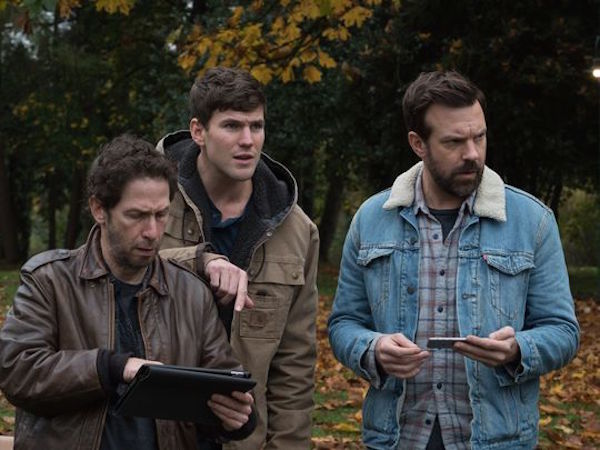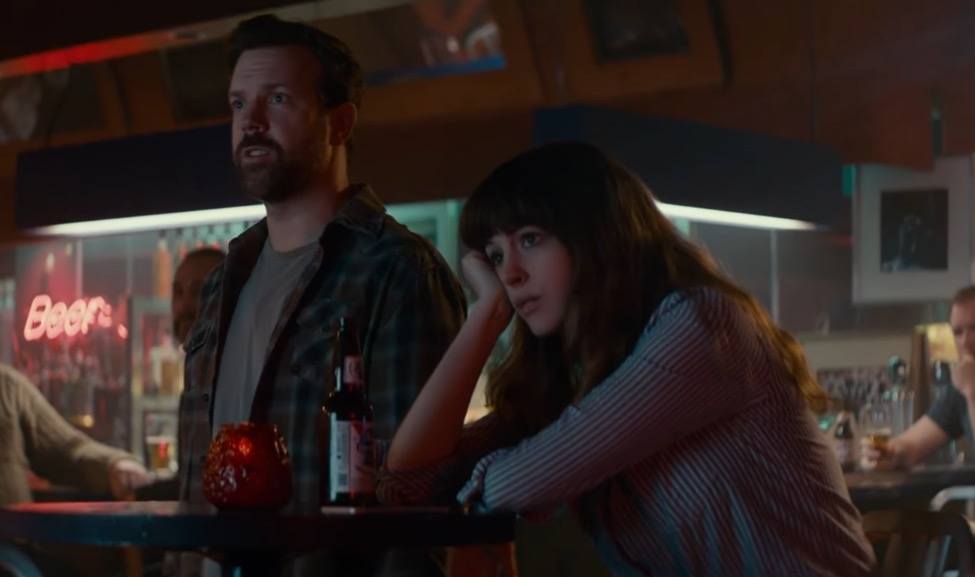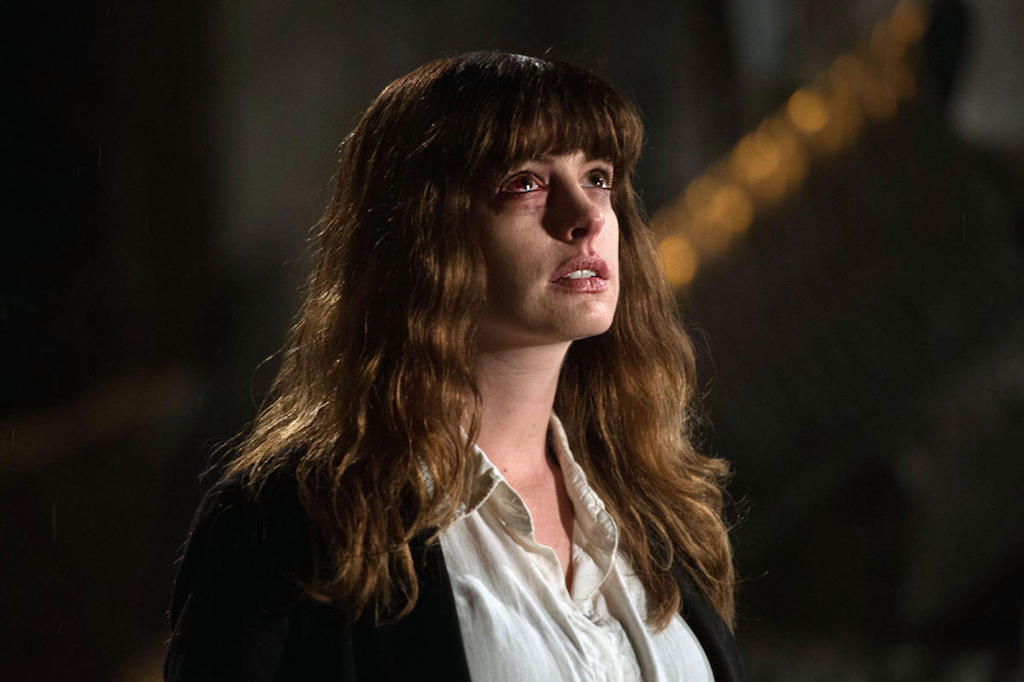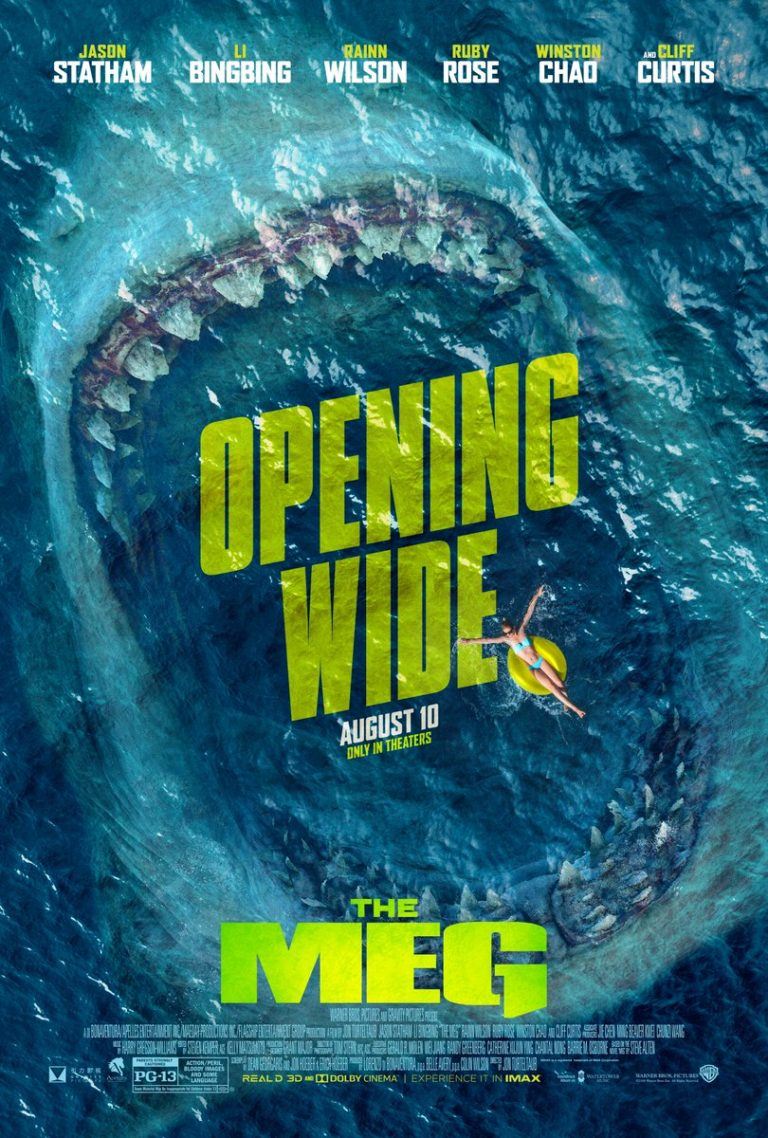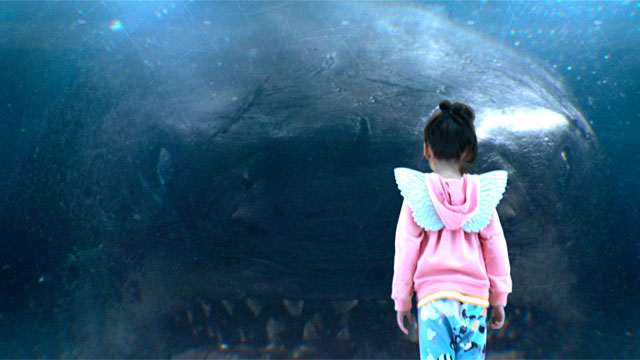(NOTE: If you haven’t already have seen the review of Omnibus 1, please proceed there for the Observations section for some background)
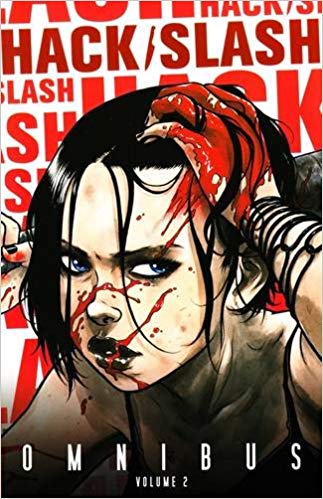
CATALYSTS:
Tim Seeley (Writer) and Way More Designers, Writers, and Artists Than I Could Feasibly List Here
REAGENTS:
Cassie Hack Vlad Assorted villains including but not limited to: A lunch lady slasher, a demonic rock and roll slasher, a disgraced beauty queen slasher, a tin man (think Wizard of Oz) slasher, a slasher made out of electricity, Chucky (yes, that Chucky), and Herbert West (yes, that Herbert West)
REACTION:
Following the full-blown psychotic breakdown of her mother into a supernatural child murderer, Cassie Hack is forced to commit matricide to stop the reign of terror. Now left alone (as her father had abandoned them previously), Cassie devotes herself to strength training and research. Years later, she now finds herself hunting down and murdering supernatural slashers as a gun-for-hire alongside the misunderstood monster Vlad, a brutal, hulking giant with a heart of gold. As she continues her quest to protect the world from the slashers that threaten it, however, she may find herself grappling with the past she thought she left behind.
HYPOTHESIS:
Having an ongoing story helps slasher movies, does having one make a slasher comic a little bit better?
OBSERVATIONS:
(For other background observations, please see the review of Omnibus 1)
The thing about Hack/Slash is, while it has quite a few problems (and we’ll get to that), there’s a good idea at its core and stories that work better than others. So, given that there are 20 stories between these two volumes and that I have a tried and tested method of reviewing 20-plus item long things from the olden days of reviewing the ABCs of Death movies, we’re gonna do this the old-fashioned way with 20 capsule reviews, each scored 0 (weak), 0.5 (average), and 1 (strong). Then we tally the results and see how close we get to 20. I’ll also be doing this solo (as I didn’t want to subject Frequency X to this experiment), and I’ll also be doing this in two parts with this intro leading into each of them. Let’s continue:
OMNIBUS 2:
The second Hack/Slash Omnibus contains 11 stories that encompass issues #1-17 of the officially numbered Hack/Slash comic series as well as the “Murder/Suicide” annual special. The series began in May 2007, releasing from Devil’s Due Publishing. The omnibuses themselves were eventually released by Image as Devil’s Due had financial difficulties, and Tim Seeley moved the series to them during the troubles. My hope going into this second omnibus was that, being the ongoing series, the art would be more consistent and the stories would be more interesting. As mentioned previously, some of the slashers and stories in the previous omnibus are still important here as they provide context for how certain events happen and why they’re important.
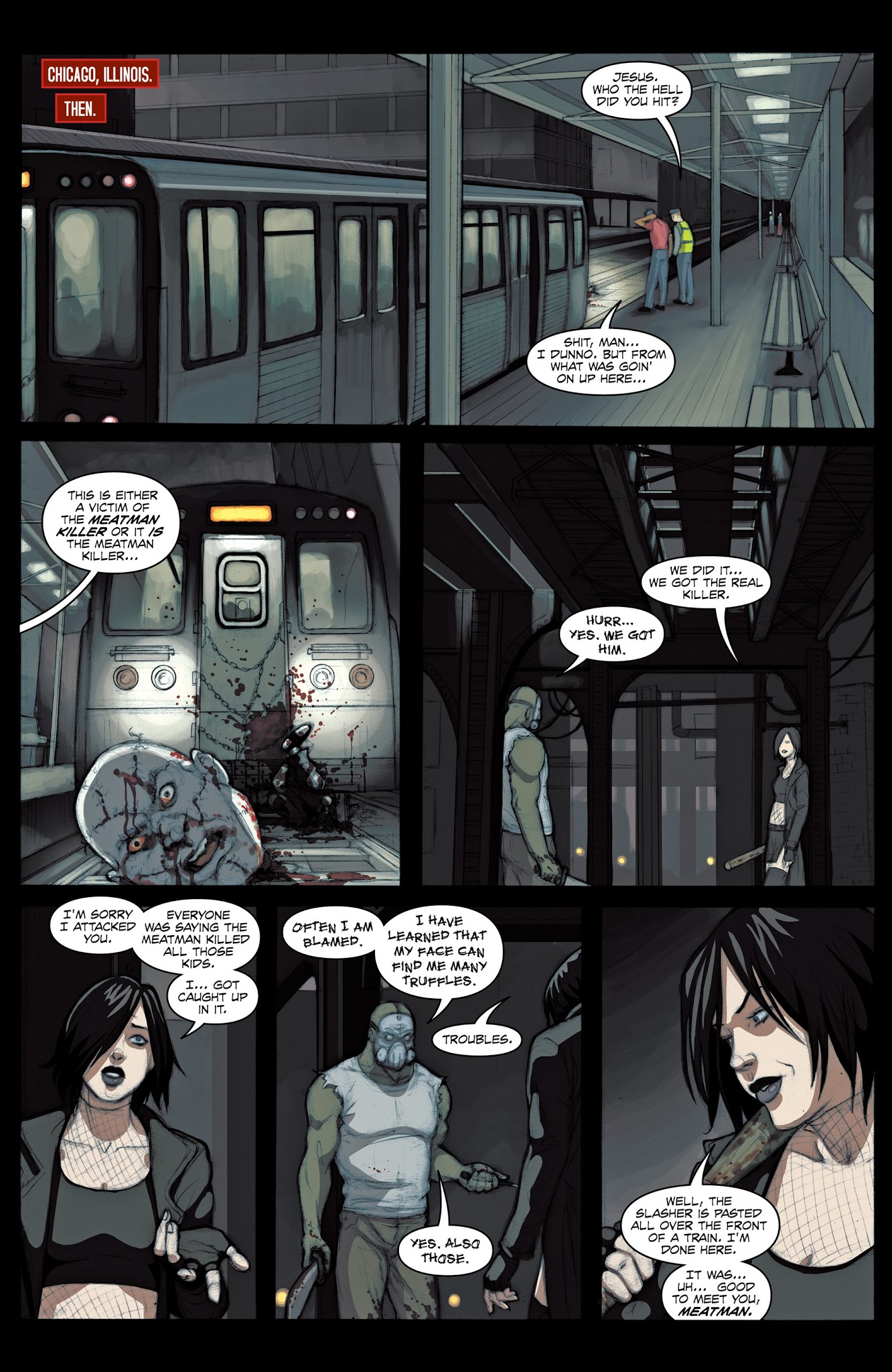
1) “Gross Anatomy” (aka Issue 1)
Cassie, having been captured by a skinned, sadist slasher, is tortured while he psychoanalyzes her and has her explain the story of her past. Vlad, meanwhile, hunts for his missing partner.
What better way to start a series than to literally have Cassie, via flashback under duress, explain how she became a slasher hunter, what happened to her mom, and how she met Vlad. The story succeeds in its telling of Cassie’s past and in the humanity and vulnerability Cassie is allowed to show (while still also coming across as the asskicker she’s supposed to be). Its biggest flaw is that the killer in it is never drawn detailed enough or presented as anything more than the conduit through which the backstory is presented. However, it feels like he was never intended to be that important to the story which is why it still works in spite of that. I will also point out here that, as predicted apart from a flaw here or there like the not as detailed killer here, the much more consistent art style of the numbered series greatly helps the success of Omnibus 2 as a whole.
Overall rating: 1 out of 1
2) “Shout at the Devil” (aka Issues 2-4)
Acid Washed, a cruddy rock band, sells their souls to eldritch beings via a shady promoter to gain fame and fortune via sacrifice of virgins. Vlad and Cassie try to find the band without becoming victims themselves.
A few elements in this story call back to the first omnibus…some of the prior victims they’ve saved are now introduced as living together after the fact and helping them find cases. This story also introduces an element that, depending on the story, feels well-handled or gratuitous: the idea that Cassie might be bisexual or lesbian as brought out by her new recurring stripper friend Georgia. In this case, it’s handled competently. However, it’s abundantly clear about half to two-thirds of the way in what this story actually is. This story is a vehicle for unneeded comic elements with Vlad (because VIRGINITY IS HILARIOUS) and an excuse to dress up Cassie and Georgia in as little as possible for a fetish-baiting sequence involving a battle with a tentacled Lovecraftian monstrosity. It’s also yet another instance of Vlad saving Cassie and kicking the villains’ asses while Cassie is somehow incapacitated and can’t do enough to save herself no matter how hard she tries. The interesting idea behind the promoter’s backstory and the strange alien dog that will recur after this aren’t enough to rescue this one.
Overall rating: 0 out of 1
3) “Love Stories” (aka Issue 5)
A series of convergent stories discussing the burgeoning relationship between Chris and Laura (two people working with Vlad and Cassie), the sacrifices Cassie is willing to make for Vlad to keep him safe, and a researcher in a top secret facility who’s experimenting on the remains of the pin-up model-turned-scientist from Slice Hard.
This story is one of the benefits of an ongoing series when handled correctly: a filler story that provides backstory and character development while setting the stage for future events. As such, all three stories are effective and well-written. The weakest of the three is the scientist’s story on a pure “what the hell are you doing” trope level that strains believability. Next strongest is Chris and Laura in that it is admirable that the duo isn’t just thrown together “because”; there are reasons now. Finally, the Cassie and Vlad bit is easily the best and shows them as comrades in arms, teammates, and most importantly, caring friends.
Overall rating: 1 out of 1
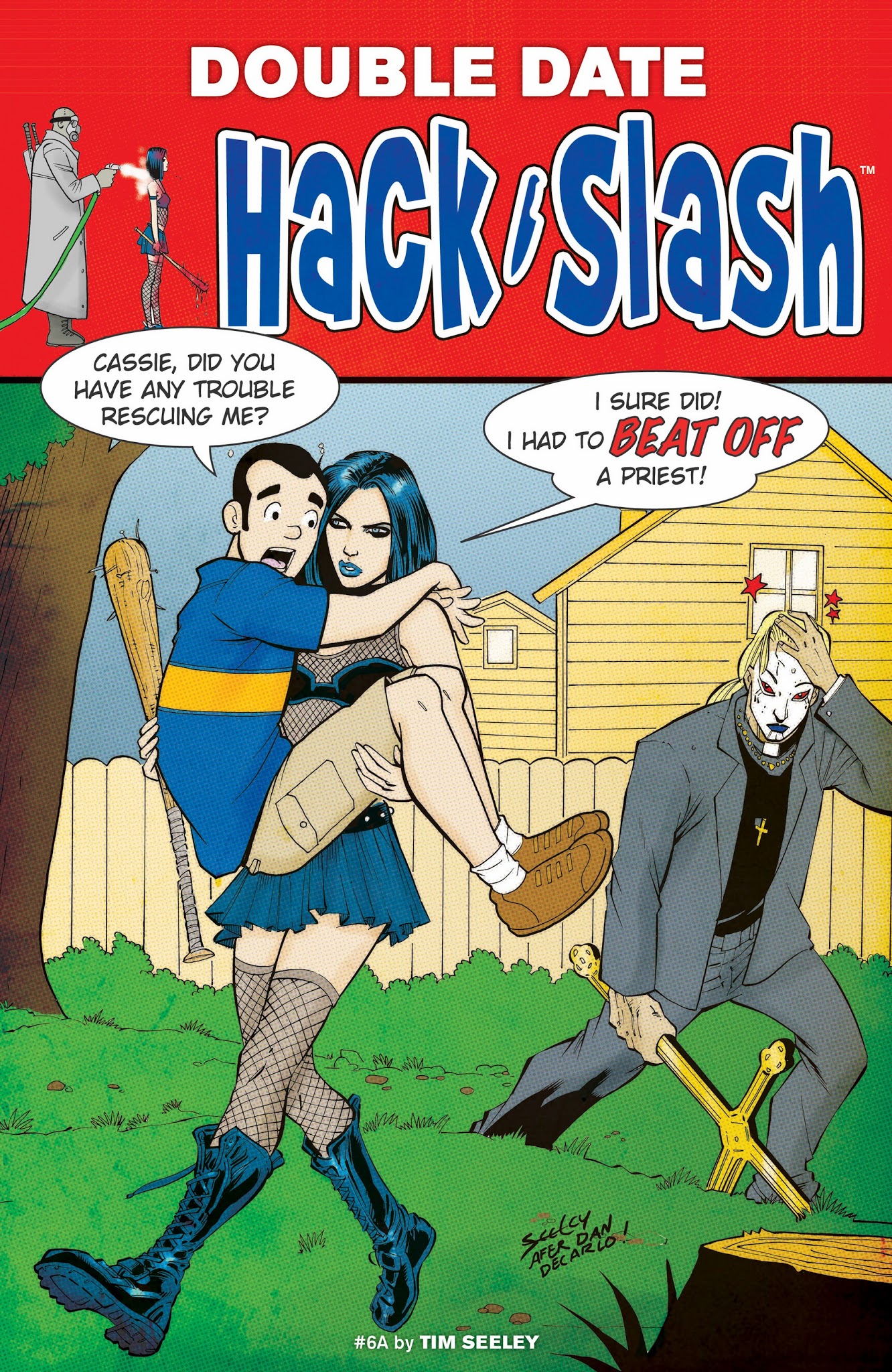
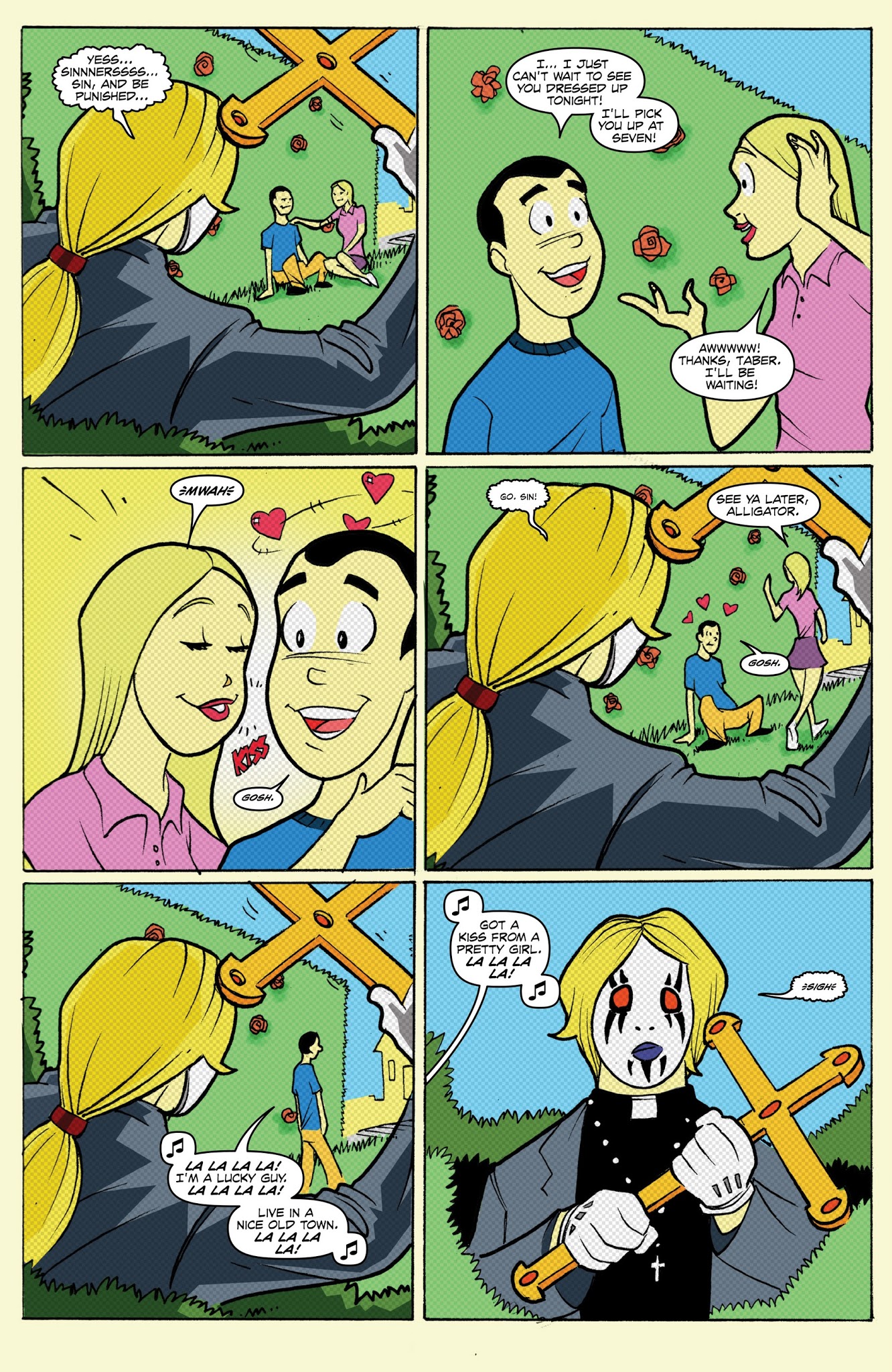
4) “Double Date” (aka Issue 6)
A series of victims killed with a giant cross point to the return of one of their old foes as Cassie and Vlad investigate a series of killings in the most Americana of Americana towns.
Purely and simply, everything that “Girls Gone Dead” in Omnibus 1 does wrong with a slasher like this, “Double Date” does right. The art style is a stroke of genius as it briefly begins in normal art before switching for the majority of its length into an homage to Archie comics. The dichotomy of Archie’s “gee-whiz” sensibility clashing with the violent, bloody, sexual, slasher style of this series makes for a perfect pairing. The only real flaws in the story are that the slasher isn’t given as much room to shine as he was in “Girls Gone Dead” and that Cassie, once again, finds herself incapacitated and out of the story in the lead up to the climax meaning that Vlad has to shoulder the load by himself again. Thankfully the story is fun enough this time to make up for it.
Overall rating: 1 out of 1
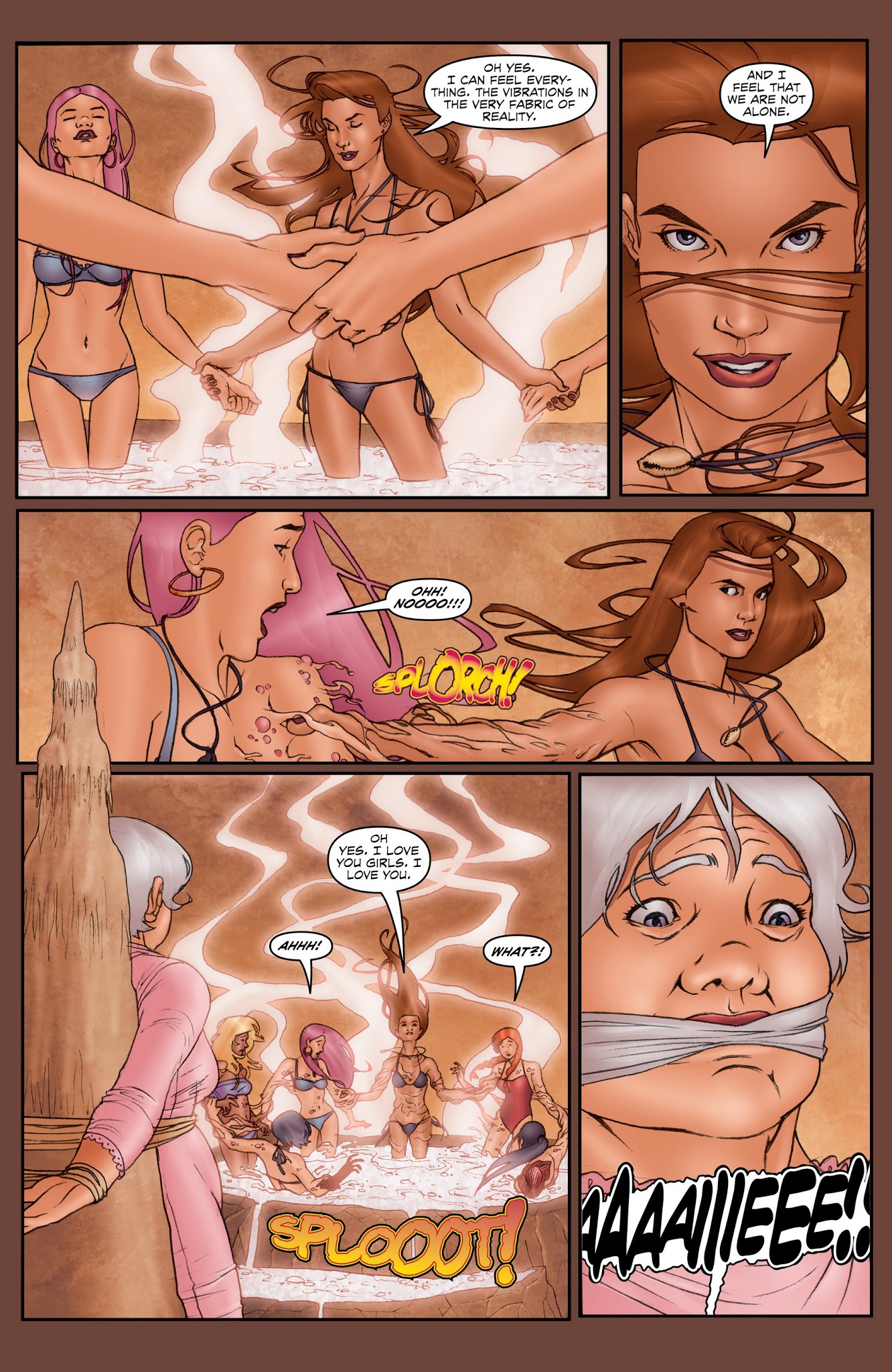
5) “Tub Club” (aka Issues 7-9)
The “trailer” from “Trailers” gets a full-length as Cassie and Vlad’s investigation of strange corpses that are just skin shells leads them to a women’s college and a late-night pseudo-sorority’s strange rituals.
The big issue with the Hack/Slash series always tends to be that they can’t strike a balance between the good and the bad. In this story, Cassie and Vlad’s relationship experiences tension (handled well) over Cassie’s friendship with Georgia from Issue 4. This friendship causes Cassie to question her sexuality and debate what she really feels about Georgia (handled mediocrely). This also leads her into an astonishingly elaborate blood cult involving nearly-naked or naked lesbians and half-human monsters, hot tubs, lip service to Elizabeth Bathory, and the continuation/conclusion of the setup in “Love Stories” (handled exactly as poorly as you’d expect). The core conflict in the story feels so cheesy and exploitative it consumes all the good in the story (Cassie being heavily active in the final fight, Vlad getting a badass role in the conclusion, the secret government organization subplot, and so forth). Put succinctly, the originality and uniqueness of “Double Date” leading directly into this formulaic, oversexed garbage is pretty much the quintessential picture of the low points this inconsistent series can hit.
Overall rating: 0 out of 1
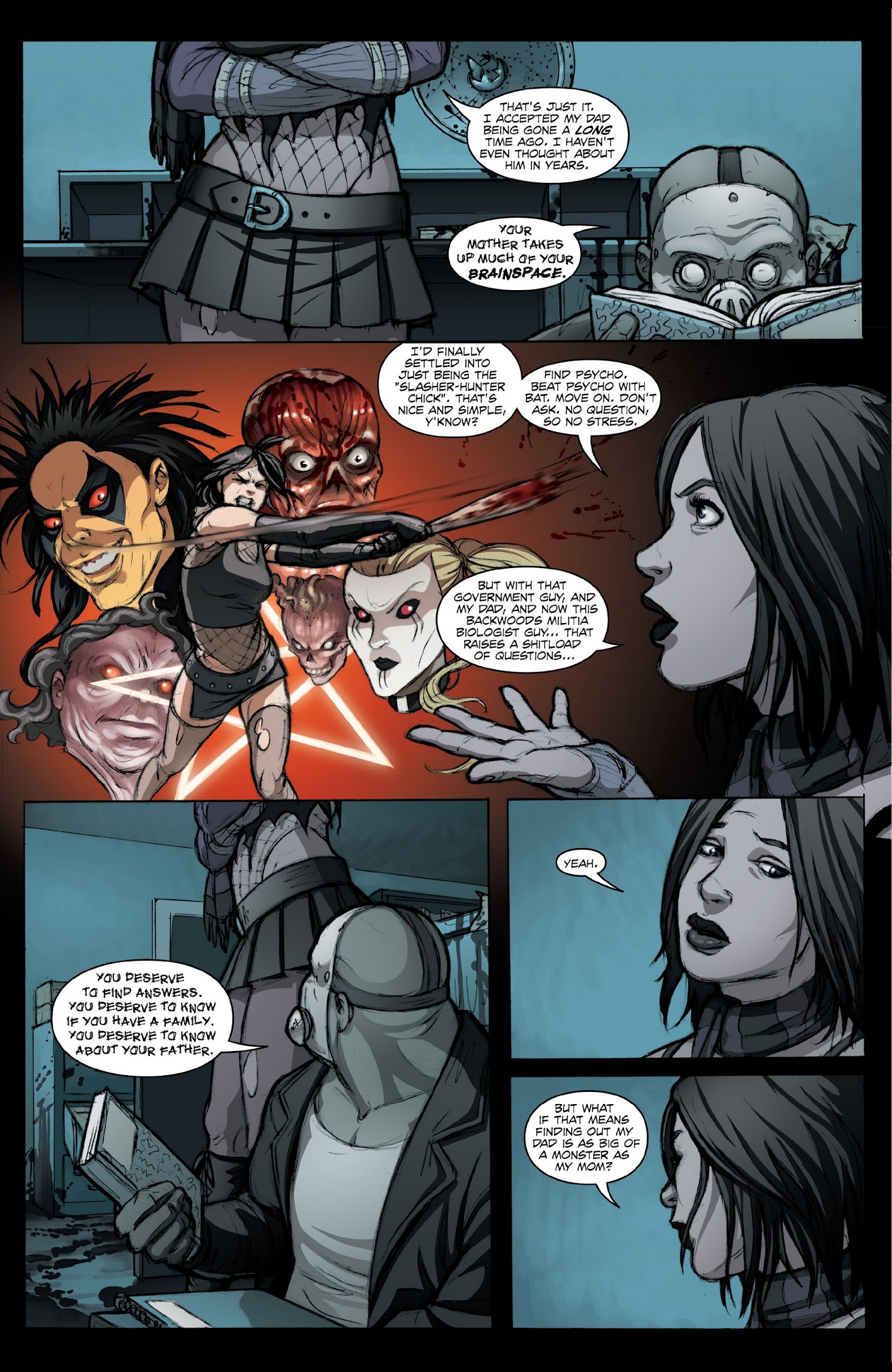
6) “Little Children” (aka Issue 10)
The revelations about Cassie’s past that are bubbling up lead the duo to Montana where they investigate a reclusive scientist and his disturbing behavioral experiments on a band of feral children.
The emotional core that makes Volume 2 better than Volume 1 is the ongoing story of Cassie trying to find her father, an element that begins to take center stage here to excellent effect. The chemistry between Cassie and Vlad as they struggle to deal with how to stop a decidedly different villain is compelling and heartbreaking. Easily one of the best in the volume.
Overall rating: 1 out of 1
7) “The Coldest Dish” (aka Issue 11)
In an odd blend of storylines, a psychic is called on to investigate what Cassie and Vlad left behind while Cassie and Vlad’s associates are asked to hunt down a strange alien dog and Cassie and Vlad themselves find themselves looking for a vigilante slasher with one eye out for revenge on those who wronged him. Oh, and Cassie is continuing to debate and agonize over her on-again, off-again Georgia feelings.
Another good story here, if one that is very much filler to move storylines forward. Of everything shown, the alien dog storyline is probably weakest just because Cassie and Vlad’s friends aren’t nearly as interesting as the duo themselves. The core story of the vigilante slasher, his motives, and how they affect Cassie and Vlad is excellent.
Overall rating: 1 out of 1
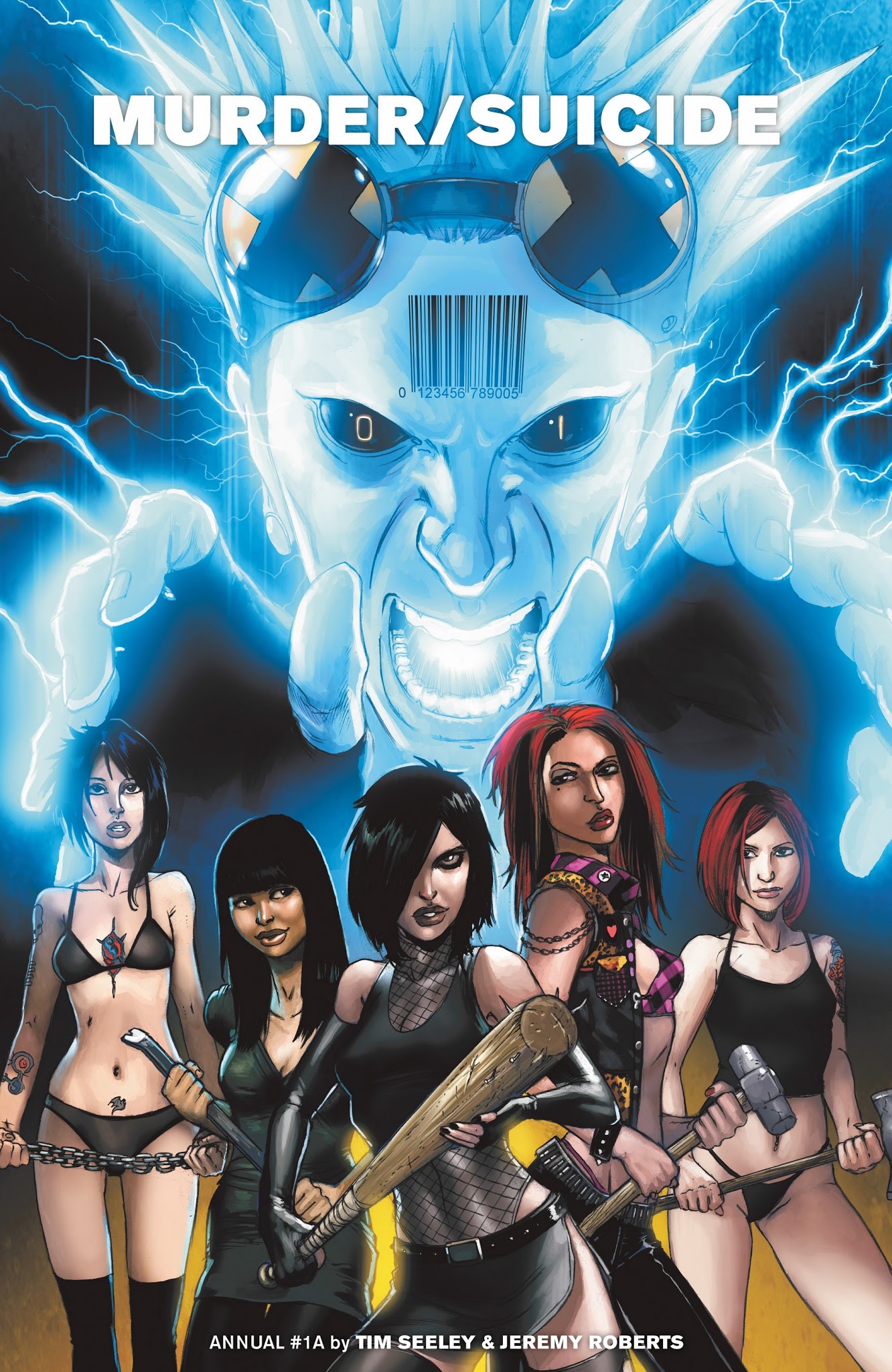
8) “Murder/Suicide” (aka Hack/Slash Annual)
Cassie joins forces with famed internet alt-model group the Suicide Girls in an attempt to find the killer murdering their models through the internet.
And so we arrive at a moment that brought the series a lot of publicity: the story in which real models were brought into the series as characters while Cassie herself was drawn naked for a Suicide Girls pictorial (not included here but alluded to in story). Tim Seeley, the writer, pops up as penciler for the first time in this volume (might be meaningless, but interesting timing…the art is serviceable but a series of interviews he’s given saying he has years of experience looking at naked women begs the question “why this story?”). This is also the story with the most nudity though, to be fair, it should be said that that doesn’t necessarily doom any story. Here though, the idea is sensible… but it’s also derivative of the Chucky crossover to the point that Cassie lampshades it by telling Vlad not to touch the killer to avoid “another Chucky situation”. The core of the problem is that the story is never good enough to raise itself up beyond being wish-fulfillment cheesecake. As horrible as Tub Club is, at least its plot is fleshed out. Here, Cassie meets disposable Suicide Girls with minimal personality and then must fight to save them. The tale, much like beauty at times, is all surface, no substance.
Overall rating: 0 out of 1
9) “Interlude” (aka pieces of Issues 12 and 13)
Cassie has a bizarre dream after eating dairy, life with the alien dog proves more challenging than Cassie’s friends bargain for, the psychic decides to report what she’s been seeing, and a mysterious man in Wisconsin has given some people money to dig up the grave of the last person Cassie wants to see.
“The Coldest Dish” may be primarily filler with an interesting plot, but “Interlude” is nothing but filler. While an argument could be made that this adds a bit of backstory to where things presently are in timeline, mostly the series spins its wheels here and churns out nothing of any real consequence. In addition, according to the table of the contents, this is not the entirety of the story of Issues 12 and 13, only parts of it. The full story involves a slasher targeting environmentalists (apparently it’s part of a crossover), and its absence could explain why the story feels like nothing happens. Pass.
Overall rating: 0 out of 1
10) “Over the Rainbow” (aka Issue 14)
Cassie and Vlad are called into action by Georgia to investigate slayings on the set of a Wizard of Oz remake by a Tin Man slasher. Meanwhile, the psychic having visions of Cassie’s battles begins telling her story to the police, and a man named Gordon Stuart (ha) goes to check with a Mr. Lazarus (and his glowing green reagent) to see about the body from “Interlude”.
This story is hard to pin down. The tin man slasher has some interesting and bizarre techniques but is kind of forgotten after this story is over, a one-and-done that doesn’t leave much impact. Cassie and Georgia’s relationship is given a welcome chance to grow after she ends up in the Tin Man’s crosshairs by accident. Finally, the reveal of Mr. Lazarus is an admirable surprise…but doesn’t distract from the fact that this story is yet more filler that, while not as dishwater dull as “Interlude”, doesn’t have as much power behind it as “Coldest Dish” either. Merely average.
Overall rating: 0.5 out of 1
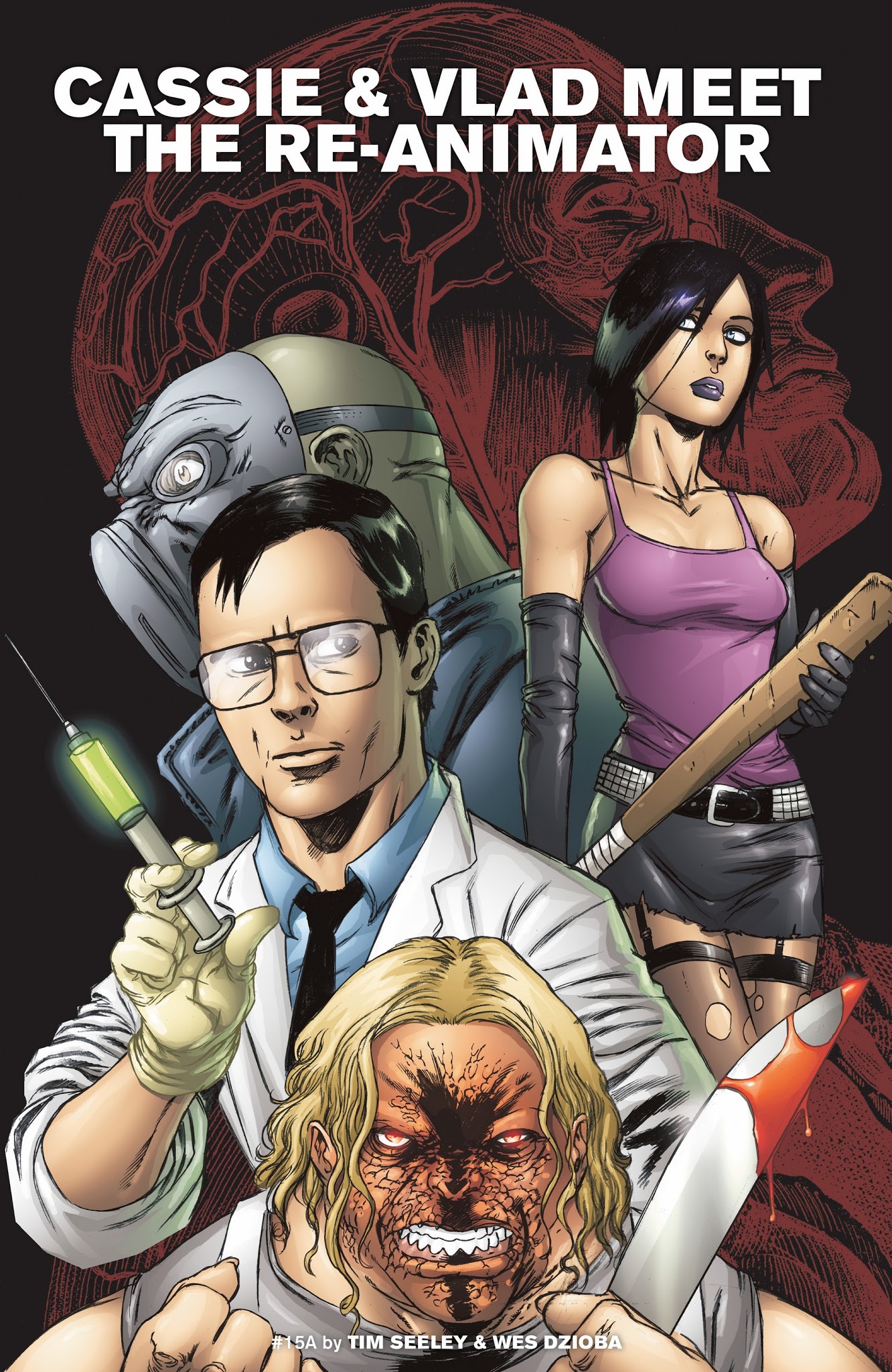
11) “Cassie and Vlad Meet the Re-Animator” (aka Issues 15-17)
The background events of much of this omnibus come to a head as the full identity of Gordon Stuart and his relationship to Cassie are revealed when Stuart begins working as an assistant on Dr. West’s (it’s not a spoiler because come on) newest experiment. The experiment directly impacts Cassie and will force her to decide if she’s ready to move on from some of her personal demons.
Because this miniseries (like the Chucky one in the first omnibus) is one of the best parts of the omnibus, I’ll start by briefly covering the negative: namely that the artwork for the three issues is inconsistent given the use of two different pencillers. Most of the stories in this omnibus use only one penciller (good or bad), and the switch in this one is jarring partway through the tale. That’s not to say the art here is, bad… quite the opposite, it’s handled very well… but the switch between the two artists is still definitely visible. Beyond that, though, this tale is excellent and filled with plenty of development for Cassie, a very appropriately handled West, a well-crafted story, and a bit of the gallows humor that is present in the actual films. Truly, the only heartbreaking disappointment in the tale is the ending stinger of West being asked to go help the President, sadly reminding us of the likely never-to-made one-time Re-Animator sequel idea House of Re-Animator.
Overall rating: 1 out of 1
Total Score: 6.5 out of 11 (roughly 3 out of 5)
Combined Final Score of Both Omnibus: 11.5 out of 20 (2.5 to 3 out of 5)
So where does that leave us with the first Hack/Slash omnibuses in the end? In a way, exactly where an average slasher leaves us. It has stories and that are useless fluff or exploitative nonsense…just like an actual slasher might have a weaker kill, a pointless/unlikable character, or gratuitous nudity (for the record I have no real problem with gratuitous nudity but when entire 30-40 page stories seem to exist to just be an excuse for it, those individual stories can get tiresome and grating). It also has some inventive slashers and stories just like a slasher might have unique kills or engaging character backstories for either the killer or their victims. Personally, I’d have preferred if Cassie, who is supposed to have fought all these slashers over time, didn’t seem to often fall into the same pitfalls that would claim the lives of a non-survivor. However, I do see the appeal of the idea and appreciate some of the directions the episodic story in particular takes as it unfolds as well as the stabilized, better art seen as the tale progresses. Overall, while going any further with the series isn’t something I’m interested in, I get how it appeals to some and can understand why they tried to make a movie out of it. Sadly it seems studio politics, development hell, and the Hollywood machine are all killers Cassie just hasn’t been able to vanquish.





